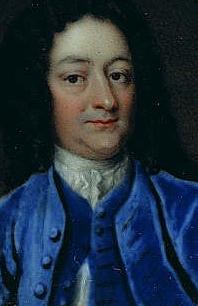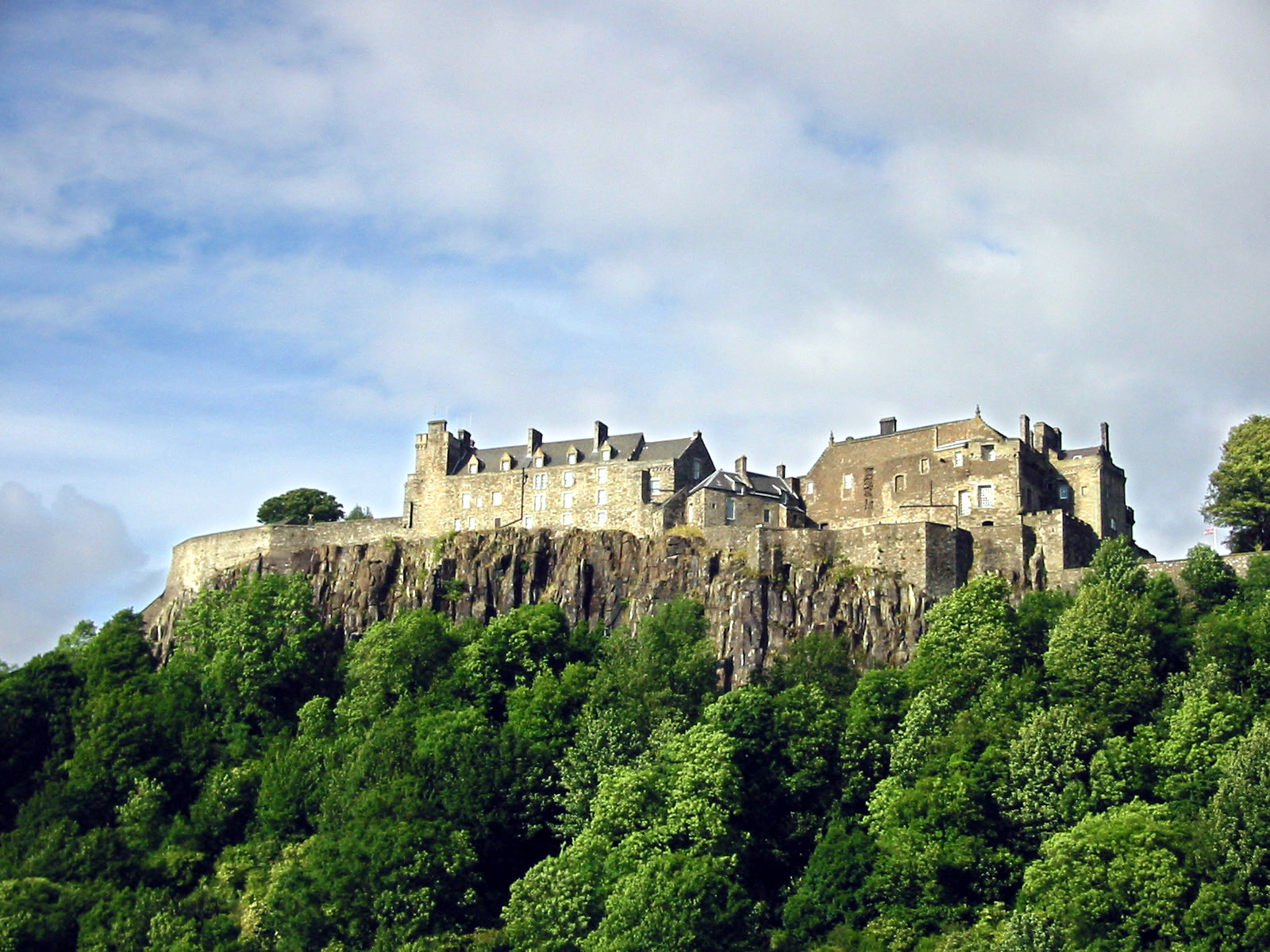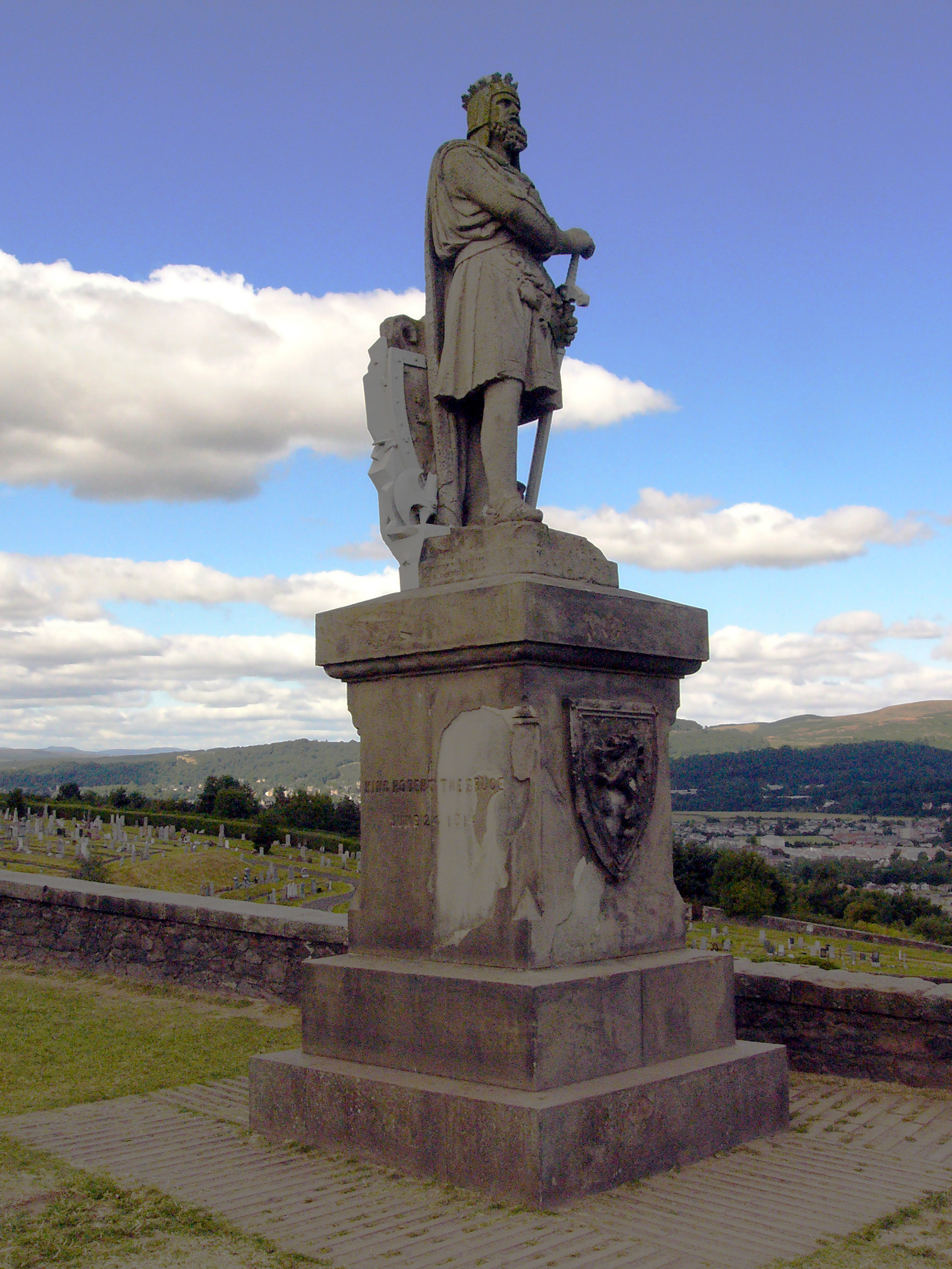|
Battle Of Falkirk (1746)
The Battle of Falkirk Muir, or Battle of Falkirk, took place near Falkirk, Scotland, on 17 January 1746 during the Jacobite rising of 1745. A narrow Jacobite victory, it had little impact on the campaign. After their withdrawal from England in December 1745, the Jacobite army besieged Stirling Castle in early January. Lacking siege equipment, they made little progress and government forces under Henry Hawley advanced north from Edinburgh to relieve it. He reached Falkirk on 15 January but was taken by surprise when the Jacobites attacked late in the afternoon of 17 January. Fought in failing light and heavy snow, Hawley's left wing was routed but his right held firm, and both sides believed themselves to have been defeated. As a result, the Jacobites failed to follow up their victory, allowing the government troops to regroup in Edinburgh. Hawley was replaced by Duke of Cumberland, who resumed the advance on 30 January, forcing the Jacobite army to withdraw to Inverness. The re ... [...More Info...] [...Related Items...] OR: [Wikipedia] [Google] [Baidu] |
Jacobite Rising Of 1745
The Jacobite rising of 1745 was an attempt by Charles Edward Stuart to regain the Monarchy of Great Britain, British throne for his father, James Francis Edward Stuart. It took place during the War of the Austrian Succession, when the bulk of the British Army was fighting in mainland Europe, and proved to be the last in Jacobite risings, a series of revolts that began in Jacobite rising of 1689, March 1689, with major outbreaks in Jacobite rising of 1715, 1715 and Jacobite rising of 1719, 1719. Charles launched the rebellion on 19 August 1745 at Glenfinnan in the Scottish Highlands, capturing Edinburgh and winning the Battle of Prestonpans in September. At a council in October, the Scots agreed to invade England after Charles assured them of substantial support from English Jacobitism, Jacobites and a simultaneous French landing in Southern England. On that basis, the Jacobite Army (1745), Jacobite army entered England in early November, but neither of these assurances proved ac ... [...More Info...] [...Related Items...] OR: [Wikipedia] [Google] [Baidu] |
Edinburgh
Edinburgh is the capital city of Scotland and one of its 32 Council areas of Scotland, council areas. The city is located in southeast Scotland and is bounded to the north by the Firth of Forth and to the south by the Pentland Hills. Edinburgh had a population of in , making it the List of towns and cities in Scotland by population, second-most populous city in Scotland and the List of cities in the United Kingdom, seventh-most populous in the United Kingdom. The Functional urban area, wider metropolitan area had a population of 912,490 in the same year. Recognised as the capital of Scotland since at least the 15th century, Edinburgh is the seat of the Scottish Government, the Scottish Parliament, the Courts of Scotland, highest courts in Scotland, and the Palace of Holyroodhouse, the official residence of the Monarchy of the United Kingdom, British monarch in Scotland. It is also the annual venue of the General Assembly of the Church of Scotland. The city has long been a cent ... [...More Info...] [...Related Items...] OR: [Wikipedia] [Google] [Baidu] |
Earl Of Wemyss And March
Earl of Wemyss ( ) is a title in the Peerage of Scotland created in 1633. The Scottish Wemyss family had possessed the lands of Wemyss in Fife since the 12th century. Since 1823 the earldom has been held with the Earldom of March, created in 1697. The holder of the title is sometimes known as the Earl of Wemyss and March, but the titles are distinct. History In 1625 John Wemyss was created a Baronet, of Wemyss in the County of Fife, in the Baronetage of Nova Scotia. In 1628 he was raised to the Peerage of Scotland as Lord Wemyss of Elcho, and in 1633 he was further honoured when he was made Lord Elcho and Methel and Earl of Wemyss, also in the Peerage of Scotland. He later supported the Scottish parliament against Charles I, and died in 1649. He was succeeded by his son David, the second Earl. In 1672 David resigned his peerages to the Crown in return for a new patent with original precedency and extending the limitation to his daughters. Lord Wemyss had no male issue and ... [...More Info...] [...Related Items...] OR: [Wikipedia] [Google] [Baidu] |
Stirling
Stirling (; ; ) is a City status in the United Kingdom, city in Central Belt, central Scotland, northeast of Glasgow and north-west of Edinburgh. The market town#Scotland, market town, surrounded by rich farmland, grew up connecting the royal Stirling Castle, citadel, the medieval old town with its merchants and tradesmen, the Stirling Old Bridge, Old Bridge and the port. Located on the River Forth, Stirling is the administrative centre for the Stirling (council area), Stirling council area, and is traditionally the county town and historic county of Stirlingshire. Stirling's key position as the lowest bridging point of the River Forth before it broadens towards the Firth of Forth made it a focal point for travel north or south. It has been said that "Stirling, like a huge brooch clasps Scottish Highlands, Highlands and Scottish Lowlands, Lowlands together". The city's status as "Gateway to the Highlands" also historically lent it great strategic importance—the credo "he who ... [...More Info...] [...Related Items...] OR: [Wikipedia] [Google] [Baidu] |
Glasgow
Glasgow is the Cities of Scotland, most populous city in Scotland, located on the banks of the River Clyde in Strathclyde, west central Scotland. It is the List of cities in the United Kingdom, third-most-populous city in the United Kingdom and the 27th-most-populous city in Europe, and comprises Wards of Glasgow, 23 wards which represent the areas of the city within Glasgow City Council. Glasgow is a leading city in Scotland for finance, shopping, industry, culture and fashion, and was commonly referred to as the "second city of the British Empire" for much of the Victorian era, Victorian and Edwardian eras. In , it had an estimated population as a defined locality of . More than 1,000,000 people live in the Greater Glasgow contiguous urban area, while the wider Glasgow City Region is home to more than 1,800,000 people (its defined functional urban area total was almost the same in 2020), around a third of Scotland's population. The city has a population density of 3,562 p ... [...More Info...] [...Related Items...] OR: [Wikipedia] [Google] [Baidu] |
Scottish Lowlands
The Lowlands ( or , ; , ) is a cultural and historical region of Scotland. The region is characterised by its relatively flat or gently rolling terrain as opposed to the mountainous landscapes of the Scottish Highlands. This area includes cities like Edinburgh and Glasgow and is known for its fertile farmland, historic sites, and urban centres. It is the more populous and industrialised part of Scotland compared to the sparsely populated Highlands. Culturally, the Lowlands and the Scottish Highlands, Highlands diverged from the Late Middle Ages into the modern period, when Scots language, Lowland Scots replaced Scottish Gaelic throughout most of the Lowlands. Geography Geographically, Scotland is divided into three distinct areas: the Scottish Highlands, Highlands, the Central plain (Central Belt, in the Central Lowlands), and the Southern Uplands. The Lowlands cover roughly the latter two. The northeast plain is also "low-land", both geographically and culturally, but in ... [...More Info...] [...Related Items...] OR: [Wikipedia] [Google] [Baidu] |
Scottish Highlands
The Highlands (; , ) is a historical region of Scotland. Culturally, the Highlands and the Scottish Lowlands, Lowlands diverged from the Late Middle Ages into the modern period, when Scots language, Lowland Scots language replaced Scottish Gaelic throughout most of the Lowlands. The term is also used for the area north and west of the Highland Boundary Fault, although the exact boundaries are not clearly defined, particularly to the east. The Great Glen divides the Grampian Mountains to the southeast from the Northwest Highlands. The Scottish Gaelic name of ' literally means "the place of the Gaels" and traditionally, from a Gaelic-speaking point of view, includes both the Western Isles and the Highlands. The area is very sparsely populated, with many mountain ranges dominating the region, and includes the highest mountain in the British Isles, Ben Nevis. During the 18th and early 19th centuries the population of the Highlands rose to around 300,000, but from c. 1841 and for th ... [...More Info...] [...Related Items...] OR: [Wikipedia] [Google] [Baidu] |
Stirling Castle
Stirling Castle, located in Stirling, is one of the largest and most historically and architecturally important castles in Scotland. The castle sits atop an Intrusive rock, intrusive Crag and tail, crag, which forms part of the Stirling Sill geological formation. It is surrounded on three sides by steep cliffs, giving it a strong defensive position. Its strategic location, guarding what was, until the 1890s, the lowest bridging point, farthest downstream crossing of the River Forth, has made it an important fortification in the region from the earliest times. Most of the principal buildings of the castle date from the fifteenth and sixteenth centuries. A few structures remain from the fourteenth century, while the outer defences fronting the town date from the early eighteenth century. Before the union with England, Stirling Castle was also one of the most used of the many Scottish royal residences, very much a palace as well as a fortress. Several List of Scottish monarchs, Sc ... [...More Info...] [...Related Items...] OR: [Wikipedia] [Google] [Baidu] |
Battle Of Inverurie (1745)
The Battle of Inverurie was fought on 23 December 1745 at Inverurie, Aberdeenshire, Scotland, during the Jacobite rising of 1745. Background After the Jacobite capture of Edinburgh in autumn 1745, Lord Lewis Gordon had been designated as the Jacobite Lord Lieutenant of Aberdeenshire and was given responsibility for raising men in north-eastern Scotland. With a mix of volunteers and men "pressed" into service, he mustered a relatively-large regiment including three battalions: the "Aberdeen" battalion, mainly volunteers from Aberdeen itself led by James Moir of Stonywood; the "Strathbogie" battalion, unwilling feudal levies under John Gordon of Avochie; and the "Mar" battalion, mostly Highlanders raised by Francis Farquharson of Monaltrie in Braemar and upper Deeside.Seton, Sir Bruce Gordon (1928) ''The Prisoners of the '45'', vol. I, Constable, p.311Reid, Stuart (2012) ''The Scottish Jacobite Army 1745-1746'', Bloomsbury, p.18 Gordon also set up a parallel civil administratio ... [...More Info...] [...Related Items...] OR: [Wikipedia] [Google] [Baidu] |
Derby
Derby ( ) is a City status in the United Kingdom, city and Unitary authorities of England, unitary authority area on the River Derwent, Derbyshire, River Derwent in Derbyshire, England. Derbyshire is named after Derby, which was its original county town. As a unitary authority, Derby is administratively independent from Derbyshire County Council. The population of Derby is (). The Romans established the town of Derventio Coritanorum, Derventio, which was later captured by the Anglo-Saxons and then by the Vikings who made one of the Five Boroughs of the Danelaw. Initially a market town, Derby grew rapidly in the industrial era and was home to Lombe's Mill, an early British factory and it contains the southern part of the Derwent Valley Mills World Heritage Site. With the arrival of the railways in the 19th century, Derby became a centre of the Rail transport in Great Britain, British rail industry. Despite having a Derby Cathedral, cathedral since 1927, Derby did not gain City ... [...More Info...] [...Related Items...] OR: [Wikipedia] [Google] [Baidu] |
Historic Scotland
Historic Scotland () was an executive agency of the Scottish Government, executive agency of the Scottish Office and later the Scottish Government from 1991 to 2015, responsible for safeguarding Scotland's built heritage and promoting its understanding and enjoyment. Under the terms of a Bill of the Scottish Parliament published on 3 March 2014, Historic Scotland was dissolved and its functions were transferred to Historic Environment Scotland (HES) on 1 October 2015. HES also took over the functions of the Royal Commission on the Ancient and Historical Monuments of Scotland. Role Historic Scotland was a successor organisation to the Ancient Monuments Division of the Ministry of Works (United Kingdom), Ministry of Works and the Scottish Executive Development Department, Scottish Development Department. It was created as an agency in 1991 and was attached to the Scottish Executive Education Department, which embraces all aspects of the cultural heritage, in May 1999. As part of ... [...More Info...] [...Related Items...] OR: [Wikipedia] [Google] [Baidu] |
Inventory Of Historic Battlefields In Scotland
The Inventory of Historic Battlefields is a heritage register listing nationally significant battlefields in Scotland. The inventory was published for consultation in December 2010 by Historic Scotland, an agency of the Scottish Government, and launched as the Inventory in May 2011. Seventeen sites were included in the first phase of the inventory, with a number of other sites under consideration for inclusion at a later date. By the end of 2012 the inventory had expanded to 39 sites. The list is maintained by Historic Environment Scotland Historic Environment Scotland (HES) () is an executive non-departmental public body responsible for investigating, caring for and promoting Scotland's historic environment. HES was formed in 2015 from the merger of government agency Historic Sc ..., the successor the Historic Scotland. there are 40 battlefields on the inventory, the most recent addition being the Battle of Sark which was listed in 2016. The list of battlefields is intend ... [...More Info...] [...Related Items...] OR: [Wikipedia] [Google] [Baidu] |








